It’s actually hard to remind oneself that it was only little over a year ago that Yamaha introduced their entire 2015 lineup with the new RiDE dual throttle brake and reverse system, thus replacing Yamaha’s often beleaguered right-hand reverse lever (we were probably the more guilty of giving the manufacturer grief than most). The change not only dramatically improved the whole product line’s ergonomic aesthetic, but added a whole new level of control and safety. Now, all RiDE-equipped units start in a static neutral position before being engaged in either forward (using the right-hand throttle) or reverse (using the left-hand throttle).
Having spent so much time testing 2015 and now 2016 WaveRunners, we’ve simply come to expect the dual throttle system whenever we ride. But it wasn’t very long ago that Sea-Doo was the only manufacturer with an intelligent braking system. The magic of forgetfulness helps dilute the frustration of monkeying with the manual reverse lever, no matter how intricately engineered. By designing an electronically-deployed reverse bucket to gradually slow a speeding watercraft (upon demand), Yamaha has joined Sea-Doo in developing some of the most advanced personal watercraft on the market – and consequently establishing a new standard for boating safety.
The brake and reverse systems of the two manufacturers differ slightly, but not enough to confuse a rider hopping from one to the other. Yamaha boasts a “patented bucket design that forces water out the sides of the bucket, whereby acting as a virtual rudder” and does deliver exactly as promised. Maneuvering in reverse is so quick that it takes a little getting used to. And engaging the left-hand RiDE lever on one of Yamaha’s unofficial 260-horsepower, Super Vortex High Output-equipped WaveRunners is a strong indicator of the thrust you can expect when launching forward.
Prior to the implementation of RiDE, we had found plenty of reason to praise the then-current FX SVHO, but bemoaned the clunky reverse lever. In getting our grubby little hands on a new 2015 Yamaha FX SVHO WaveRunner, we needed very little time to recall our previous test ride. And although reviewing a 2015 model in the face of an influx of 2016 models may seem ill-timed, we argue that many units are still available at dealerships today, and for discounted prices, thus making them all the more attractive. But we’re getting ahead of ourselves…
First and foremost, the FX is deceptive. From the outside, the FX is rather staid in its rakish design. Whether its a naturally-aspirated 180-horsepower HO model or a supercharged SVHO, the hull, deck and trim remains the same (apart of course, from some rather decadent automotive-grade coloring). Only by adding the Cruiser option does the FX “bump up” in any sort of extra trimmings like pop-up cleats and the high-backed scalloped seating. Otherwise, the FX SVHO could easily slip past as a regular ol’ HO.
To many, that’s the beauty of it. Void of audacious badging, a custom hood or fairings, Yamaha lets its 1,812cc centrifugally-supercharged SVHO engine and 160mm pump do all the talking. The plant is no stranger to the winner’s circle, as Yamaha claimed four of the five Pro Runabout championships at this year’s IJSBA World Finals. Slinging 8.5:1 compression forged pistons, the SVHO runs large 60-pound fuel injectors, and an increased intercooler (providing an impressive 22-percent increase in efficiency) over the previous SHO model.
Putting all of that to work is a vacuous 86mm HKS supercharger with a 6-vein impeller pressing out 60-percent more boost over the SHO as well. Although the powertrain hadn’t changed since the 2014 introduction of the SVHO, the FX’s overall performance has improved nominally thanks to Yamaha’s all-new NanoXcel 2 hull and deck material. The new lightweight material shaves off just shy of 50 pounds from the FX platform (833 lbs. dry weight), optimizing the runabout’s power-to-weight ratio for quicker acceleration and throttle response.
And the weight savings are noticeable. When pinned, the FX SVHO’s race-inspired 8-vein pump (housing a 160mm impeller) produces enough thrust to leap to a full sprint from a standstill like a catapult, launching a single rider (with only a gallon or two of fuel in its 18.5 gallon tank) from 0-to-30 in 1.5 seconds, and up to 60mph just a hair past a second over that. Our bright yellow and black metallic test unit was well broken-in, and hit 69.2 mph on a cool Arizona desert morning (with the electronic trim programmed to a flat setting).
The big three-seater’s 140.2-inch beam manages to perform admirably in both above moderate chop and in the corners, but not without the necessary rider input. In the rough stuff, be prepared to stand up, with the 5-position tilt steering all the way up. When aiming to cut a hairpin, drop those bars to their lowest setting, slide your butt half way off the seat, and plant your inside knee flat in the footwell. The FX SVHO responds masterfully to body english, so be prepared to move around.
For those looking to just enjoy Yamaha’s most powerful full-sized runabout under calmer conditions, the pistol grip-style handgrips are comfortable, and the single analog dial gauge (flanked by dual LCD screens) is easy to decipher at any speed. Forgiving charcoal gray Hydro-Turf mats stretch over the wide swim platform and footwells, with a folding swimstep that fits flush to the transom when vertical. Total storage is a blend of screw-top watertight bins in the dashboard and beneath the rear seat, a glove box, wet storage on the rear deck (ideal for ropes) and a sealed front stowage totaling 33.2 gallons.
That being said, its difficult to contain our enthusiasm for this particular machine. Whether fooling around with friends, cruising the lake with family, or charging the buoys, the FX SVHO is more than capable. Yes, there are machines with more storage, more horsepower and more bells and whistles, and in most cases, you’re going to pay for those things too. Priced at $15,099, it comes in comparable to competing units. And it can run on the cheap stuff too (internal knock sensors detect low octane fuel and retard engine timing).
Of the full-sized runabouts to be offered for 2015, the FX SVHO manages to walk the line of versatility better than many others. The WaveRunner’s blend of ergonomic design, amenities, power delivery and economy makes it a performer that all members of the family can enjoy, and that makes it a winner in our book.
Additional images courtesy of Alie Block’s Photos by Alie and are available for purchase HERE.




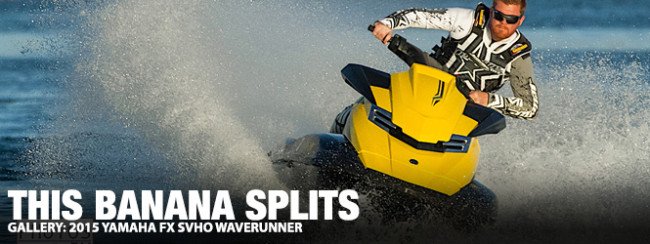
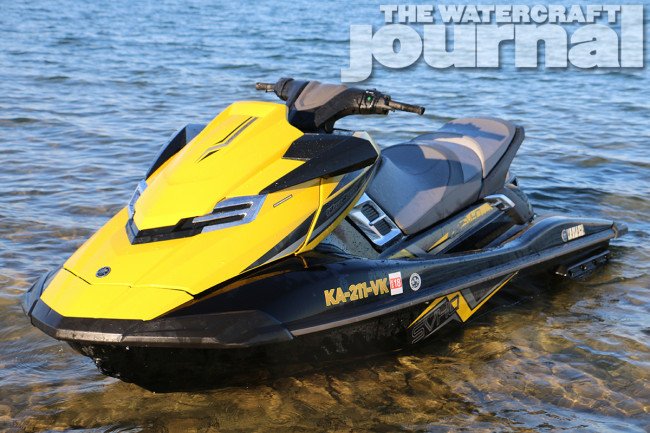

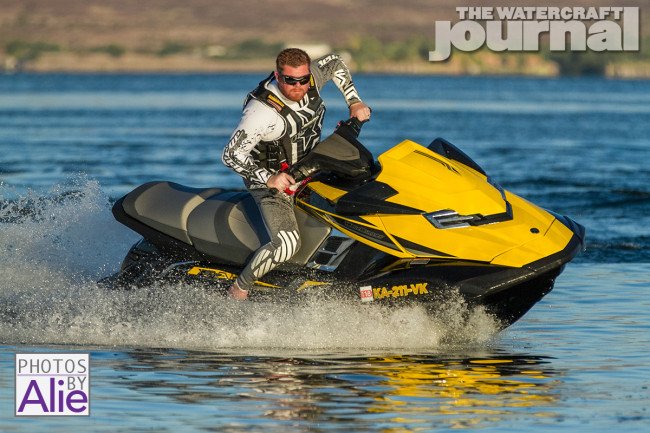

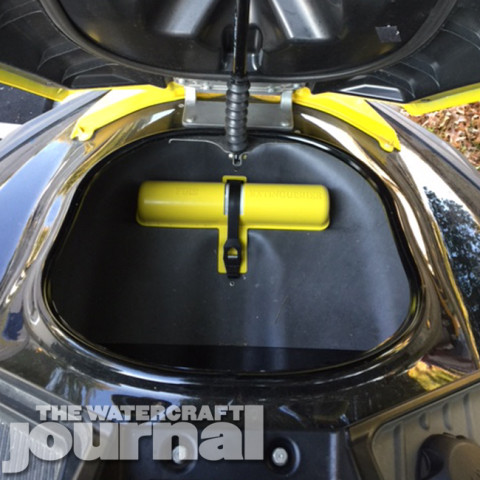
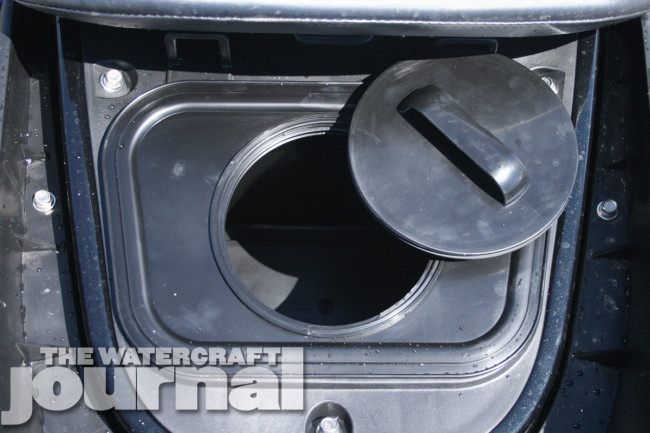
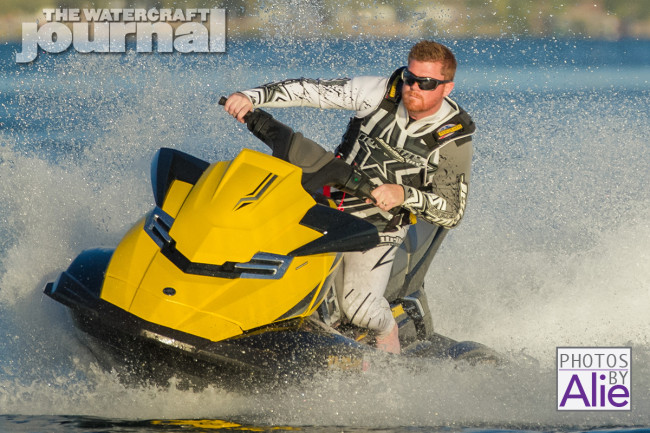




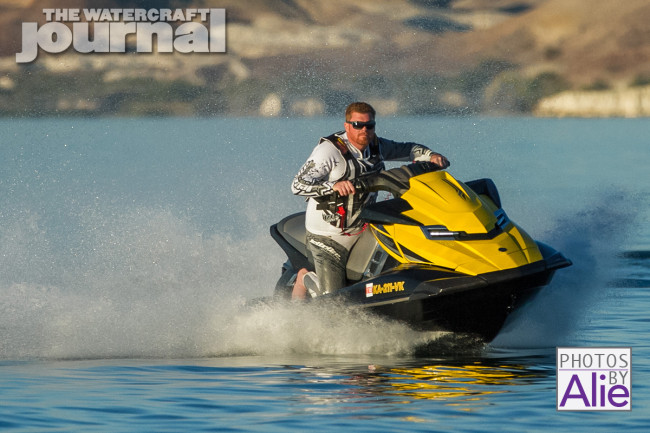
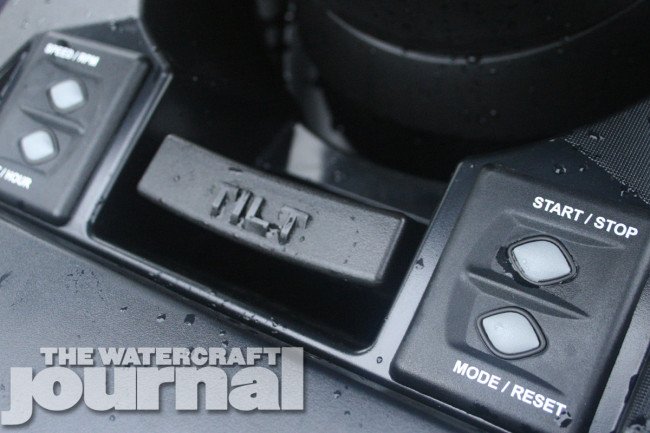
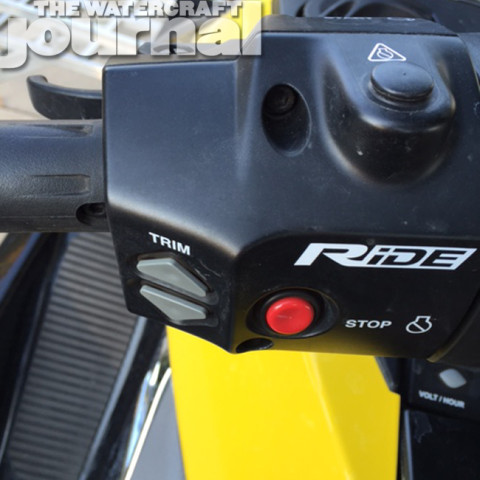

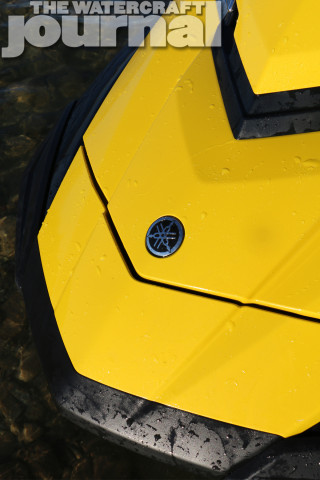
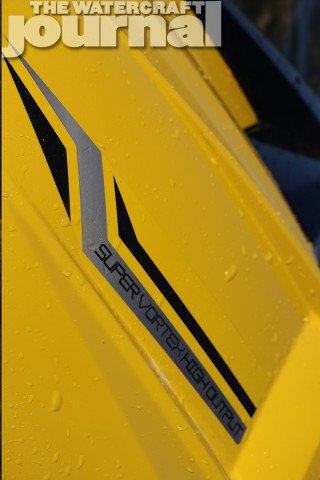
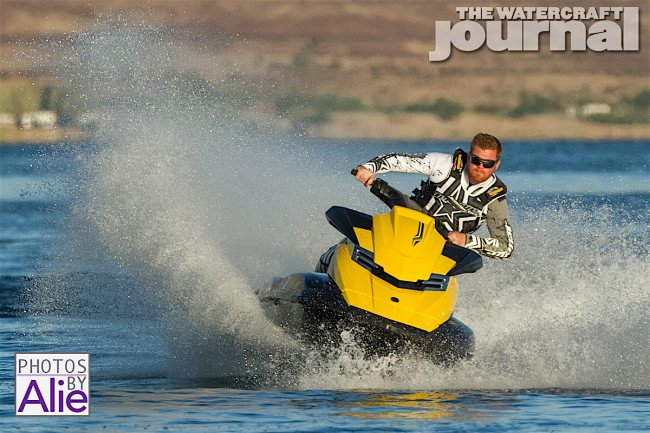






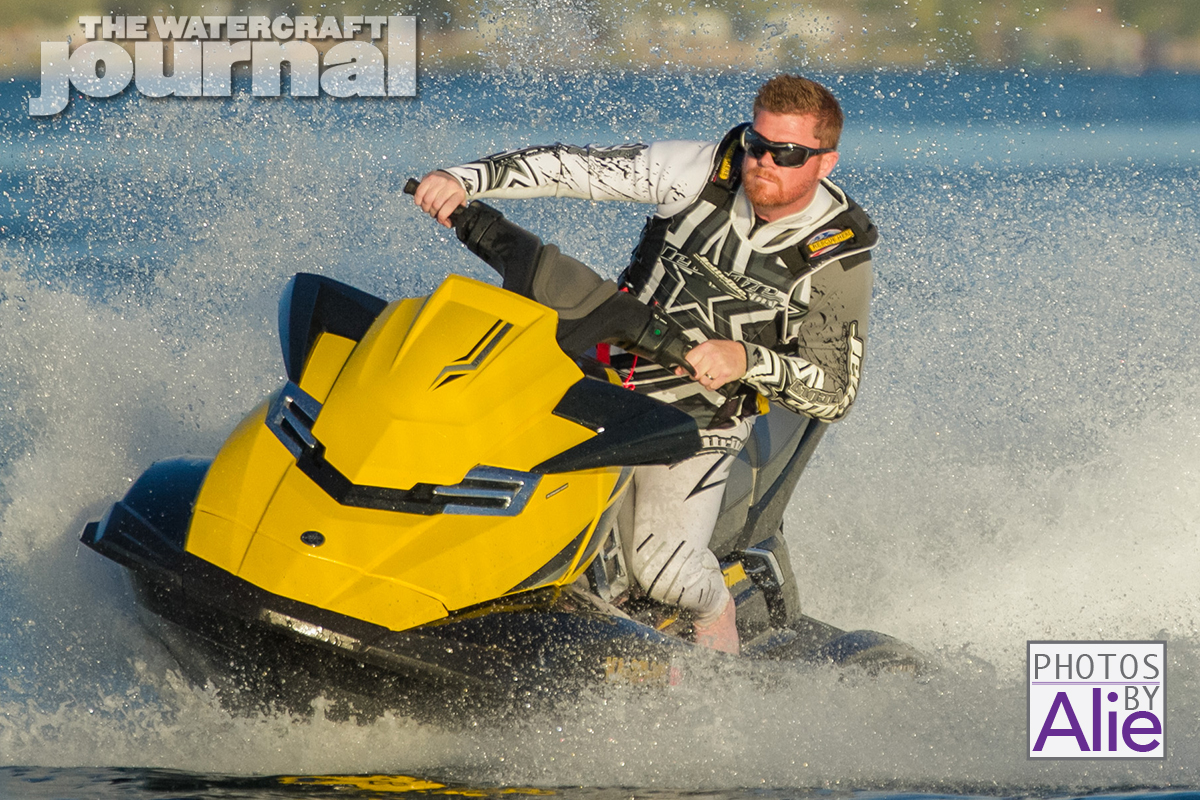












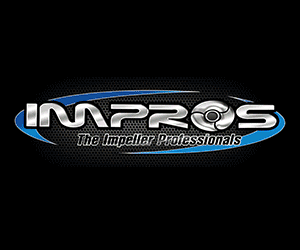

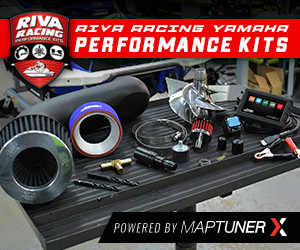
I called Yamaha like the article mentioned because I have a 2014 with an SVHO motor. Yamaha said they hadn’t heard anything regarding a formal request for service. Just wanted you to know. Thanks.
That’s because there isn’t a formal request for service. The suggestion was for people who have already experienced a failure or are looking to perform the upgrade.
My ideal FX hull would be a smc bottom hull that you didn’t have to worry about the eggshell. Move engine back 2 inches to unload the nose weight. As for the ride system, I’ll wait 4 years and see about reliably. This is one reason why the Doo was off my list. Sucks when you get stranded 100 miles from where you put in.
Call Yamaha and was told they would not do anything unless the timing chain had broken. My boat is a new 2014 model FX-SVHO. Yamaha has no plan for a recall…..
No. Neither did we state that Yamaha was issuing a recall.
Kevin, You did however state that Yamaha was aware of the [timing chain breaking] problem. Also to be sure, the original article had accurately stated “concerns over the SVHO’s timing chain were addressed by Yamaha for 2016 with a redesigned, stouter chain and hardware,” also, that there was a retroactive fix for the 2015 or older SHO and SVHO engines. You went on to write that although not yet an official recall, customers are encouraged to contact Yamaha’s Customer Relations Department at (800) 962-7926 and submit a formal request for the service. Talk about semantics. There IS a problem, be responsible!
I myself had called CS out of concern that my new and very expensive Waverunner had the potential to leave me stranded – without warning. Yamaha rep refused to provide any statistical data, but did call back a week later to inform me that you had been told to remove the paragraph about there being any recall… Yamaha reps so apathetic to their (mostly loyal) customers with regards to the matter – what a disappointment, and now you, otherwise an obvious enthusiast and contributor, also removing the truth about the timing chain. Recall or no recall, this is a real issue (now re-designed for 2016 as a result). I bought Yamaha for reliability, and now feel the fool as I overlooked the competition. Yamaha says.. Don’t worry, you have a warranty, Ok, did you see Tommy Boy and the part about the Guarantee Fairy? Google it, it’s fitting. Verizon video sums it up too. https://www.youtube.com/watch?v=Esrckega-6U
Yes, you’re right. This review previously mentioned the growing concerns over potential timing chain failure, even going so far as to list the Customer Relations number for more information. But I did not write that owners should submit a request for service though, and did state there was no official (or unofficial, for that matter) recall. And yes, the representative is correct: we were asked to strike the paragraph mentioning it.
In discussing the matter with several dealers and Yamaha itself, the numbers of 2014 and 2015 engines that have suffered timing chain failures have been compared to us as “less than cracked Spark hulls,” which as you know was a number far exaggerated by persons loyal to brands other than Sea-Doo. Remember, your ski hasn’t failed. Your warranty is still valid (presuming you haven’t modified the unit). You’re good. Go enjoy your WaveRunner.
At least you have a warranty to fall back on. Mine is long gone. Fortunately, my timing chain is still in tact. At the time, I opted for reliability above all else, thus my disappointment in Yamaha. I can understand if they don’t declare a recall on every unit, but I feel they could at least step up and extend the warranty on the timing chain issue to show they care about their customer base. Problems always exist, so it’s not that there was a problem- it’s how the problem was dealt with that matters in my book.
My timing chain also failed at 50 hours….failed at high speed causing both riders to be thrown at 60mph and get injured. getting this fixed under warranty has been like pulling teeth!
By the way, the author Kevin has mentioned several times that Yamaha is aware of the timing chain issue and is A) Quietly trying to make things right with their customers by updating engines that have timing chains fail and B) saying that this timing chain issue is highly exagerated and very minor. However, I take issue with these two points as A) by keeping this as quiet as possible, people are being needlessly injured. Had I known that this was likely to happen, I would have gladly sold my FZS at a loss and purchased the 2016 model with the newer chain assembly design. I also strongly disagree that my experience is a rare occurrence. My research suggests that very few svho engines are making it past 100hrs. This is a safety issue and keeping this hush hush is unethical at best.
Same problem here down under in Queensland Australia although I have wriiten email from Sydney head office acknowledging the problem, but wont fix it until its broken..In my case I do long distance charity rides (1600km) and in very remote areas..prevention is better then a cure and luckily we have laws here that can force the issue if required..I’m currently waiting on a response back from Sydney about reconsidering fixing the issue before my 1750km ride in 2017..the dealers are great and are supportive its the head office with the issue…if it was a car that could have a catastrophic failure it would have to be recalled under our laws..i see no difference. Mine is a 2015 FXHO cruiser that I paid 20k AUD for, so no small amount. Meanwhile US friends check out our page here in the land of OZ…PS Love your stuff Kevin
Hi, I am looking at new 2015 and 2016 VXR’s with the 1.8 engine. Do any of you know if this engine shares the same timing chain as the SHO and SVHO models? Dealer looks at me like I have 10 heads when I ask about timing chain issues. I like the look of the 2015 better, but if it is the same timing chain then I will buy the 2016 model to be safe.
No, they’re not the same. You’re good.
Hi, I’m from Queensland Australia also & I’ve got a 2015 FX SVHO with 81 hours on it & the timing chain broke just on the weekend. Was doing about 90KLMs an hour & engine cut out…freaked me out, but didnt fall off. had to be rescued/towed back to the nearest boat ramp. The dealer said that the engine will be replaced with a 2017 model.
The issue was Yamaha’s timing chains on SVHO engines prior to 2016. A ’16 or ’17 will have the same improved timing chain.
Just purchased a 2014 FZS SVHO with less than 40 hours, unfortunately I didn’t know about the timing chain issue. Is there a fix or upgrade that can be done to prevent the issue from occurring as there is no warranty on this machine.
Thanks
I have just picked up an Amish purchased formerly owned 2014 YAMAHA WAVE RUNNER SVHO super charged ski and shorelander trailer! Not only has he paid it off early june of 2020 because of the 2014 Timing chain Failure before 45 Hours that happened to him and seeing how he is Amish well he did not contact the selling dealer about the timimg chain break!! To boot Yamaha has HELD Back his NEW Shroelander trailer title from Pennsylvania DMV way so not cool Yamaha Power Sports!! Financing Department! I bought it with the regisration only until Yamaha Financing releases the Pa issued trailer title paid in full yamaha!